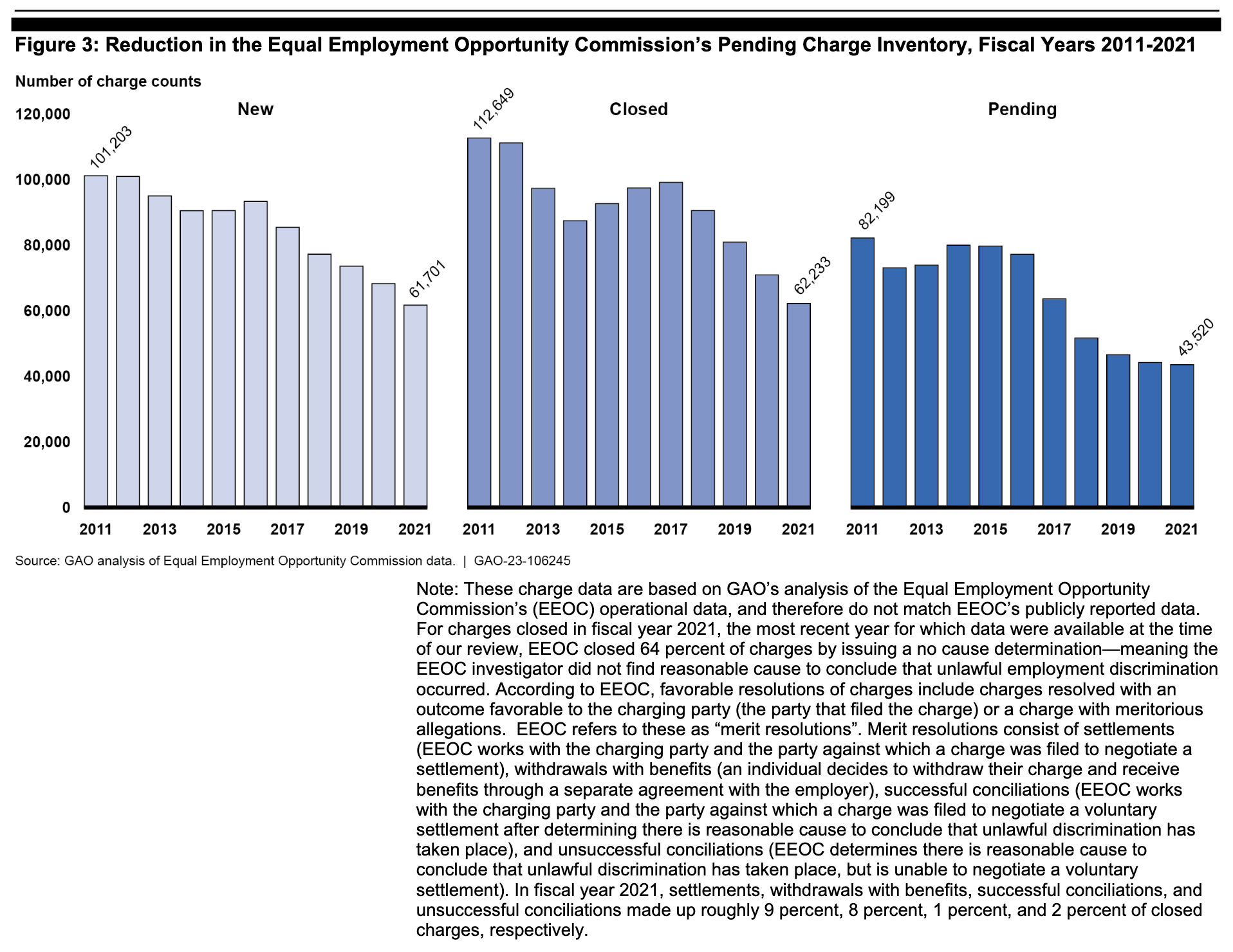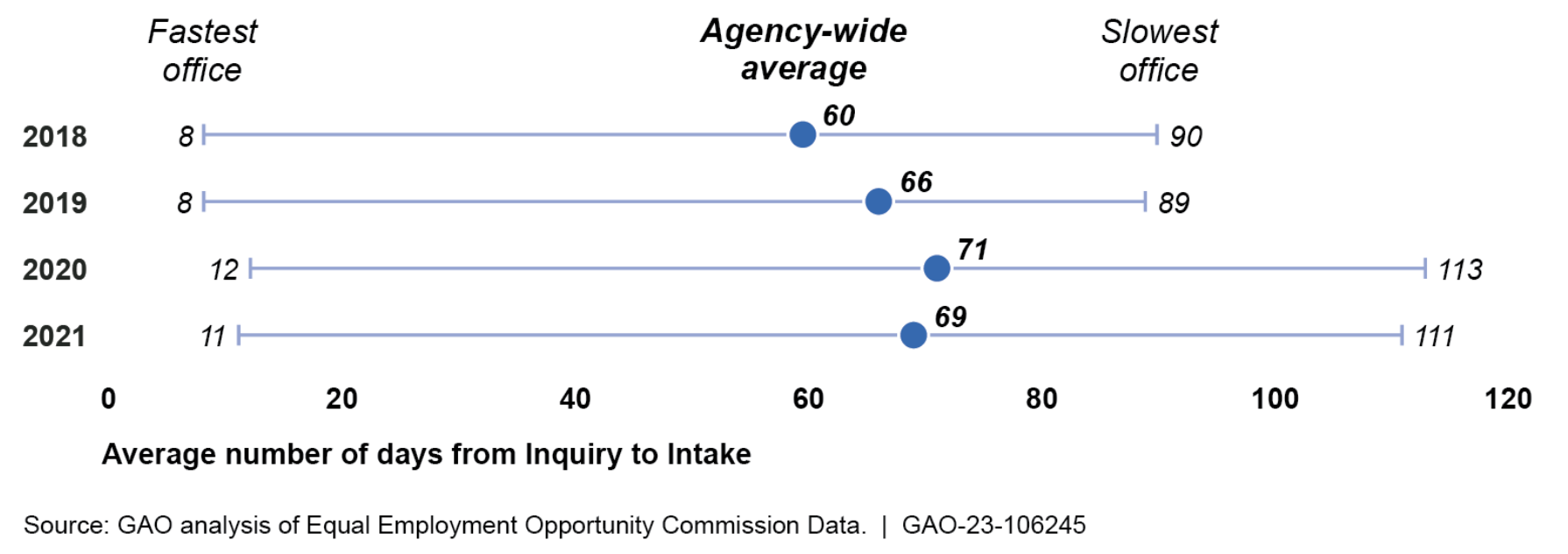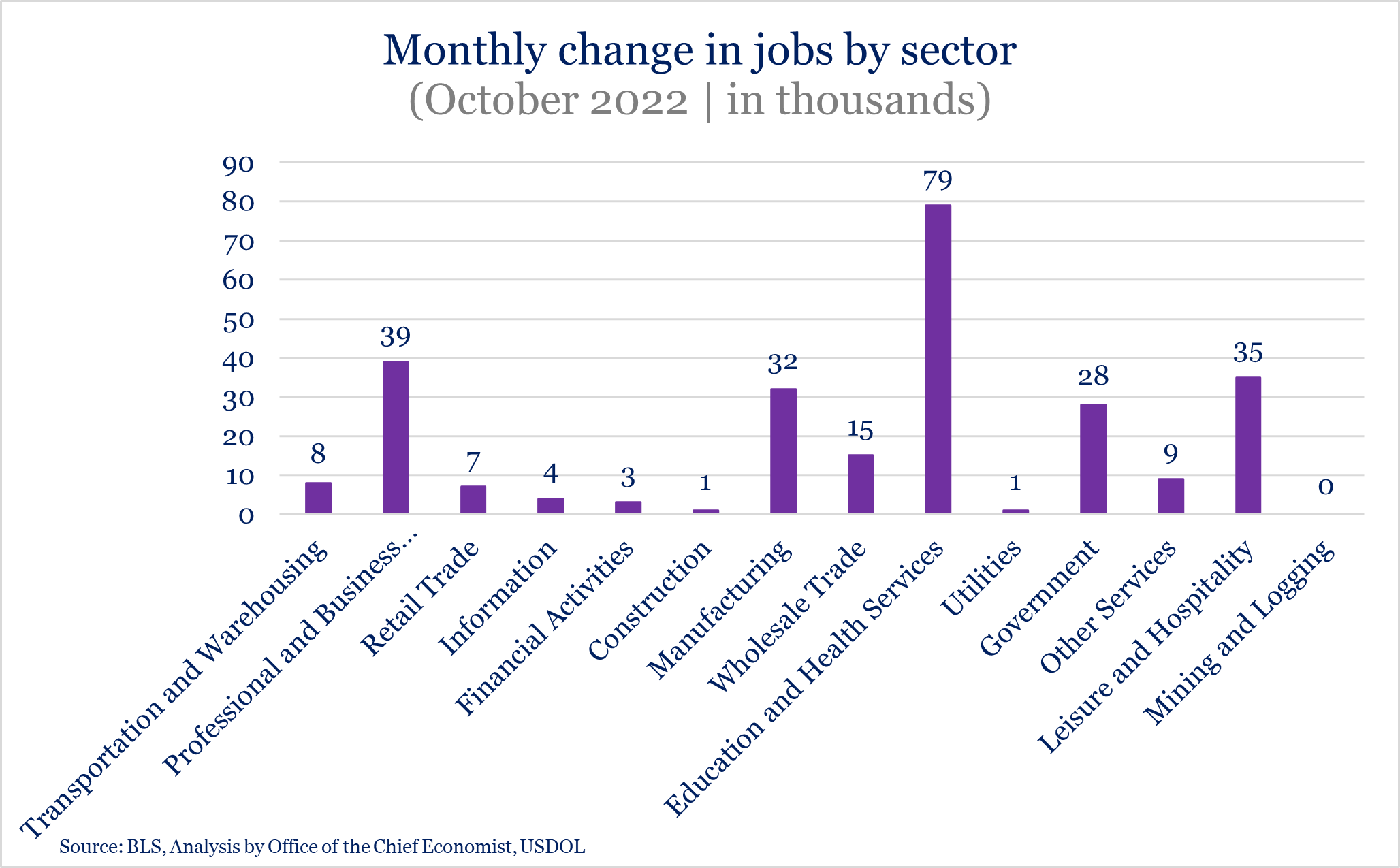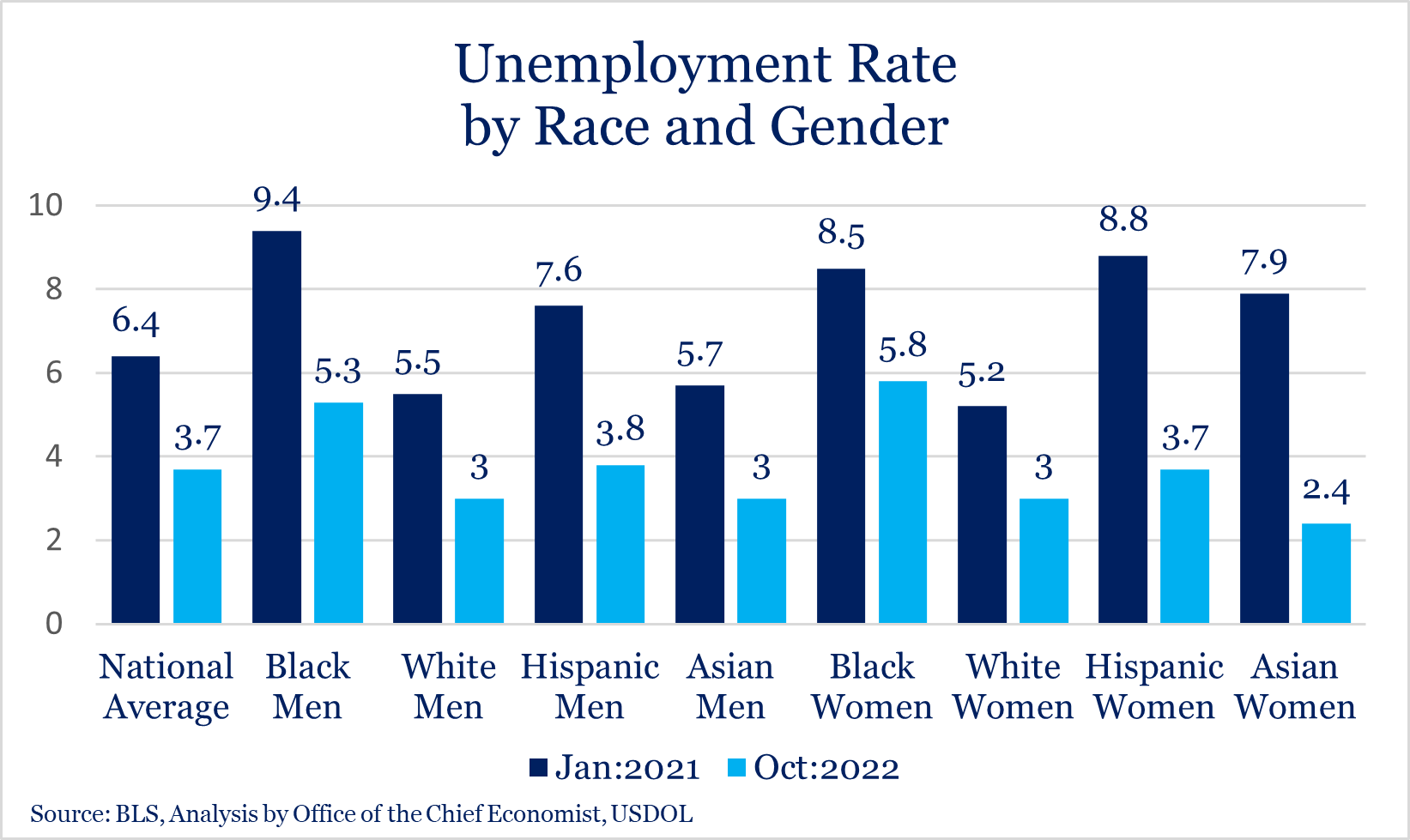
- There Are Three Reasons The Coming Harvard & UNC Case Decisions Will Not Harm “Affirmative Action” Despite Now Growing Fears
- US GAO Reported That EEOC Needs Oversight on Length of Charge Intake Process
- US BLS JOLTS Report For September Showed Increase in Job Openings to 10.7 Million; Hires & Total Separations Down Slightly
- Analytical Basis Behind U.S. NLRB General Counsel’s Memo on Electronic Surveillance and Organizing Flawed, Says Top Labor Law Attorney
- Political Flip Continued at U.S. NLRB with Publication of Proposed Union Election Protection Rule That Would Rescind Current Trump-Era Rule
- Economy Added 261k Jobs in October; Unemployment Rate Increased Slightly
- In Brief
- Looking Ahead: Upcoming Date Reminders
Monday, October 31, 2022: There Are Three Reasons The Coming Harvard & UNC Case Decisions Will Not Harm “Affirmative Action” Despite Now Growing Fears
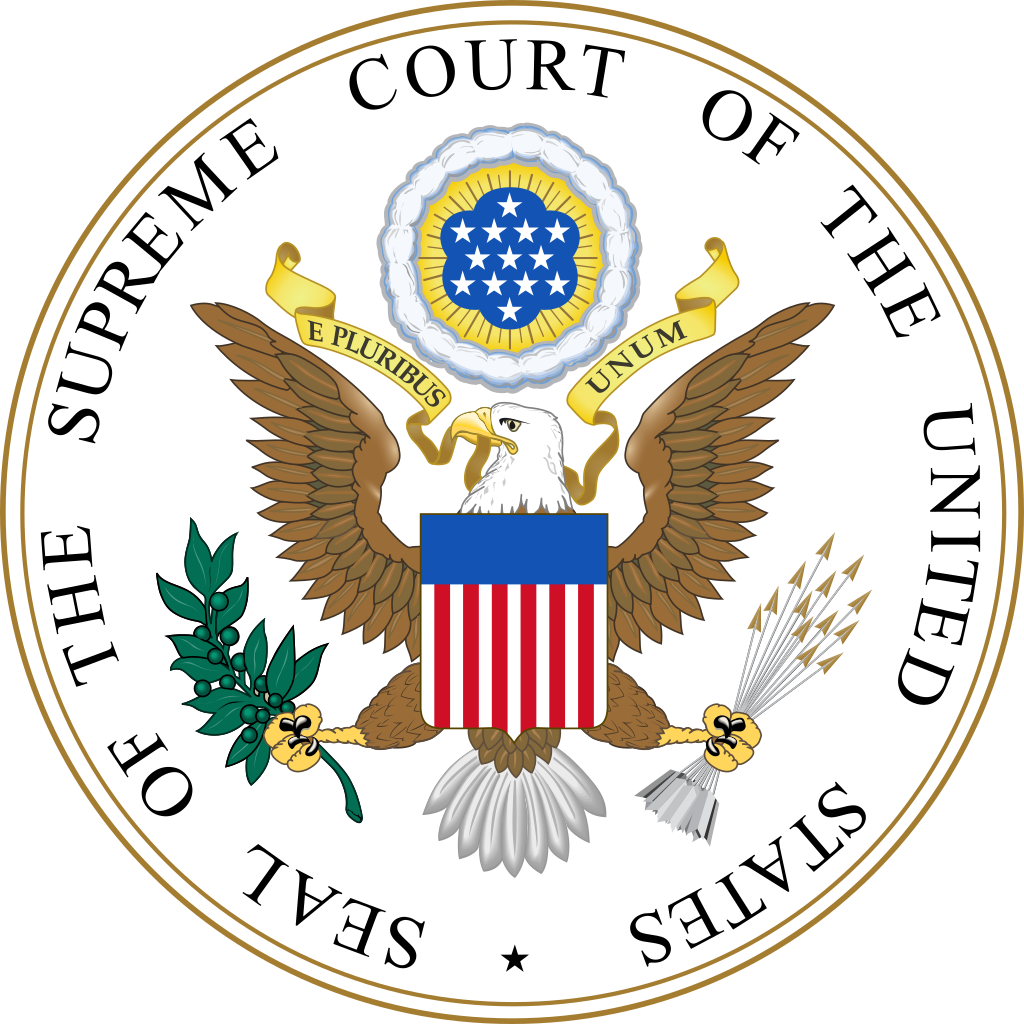
The two cases separately challenged the undergraduate admissions practices and policies of the University of North Carolina and those of Harvard University as unlawfully discriminatory based on race (Whites as victims) and ethnicity (Asians as victims). You may both listen to the oral arguments and obtain written transcripts of the legal arguments in the UNC case here and in the Harvard case here.
Almost immediately after the last word in the Harvard case (that the SCOTUS heard second in order), we began to receive the first of what became a steady stream of e-mails and telephone calls in the following days from lawyers and diversity and compliance officials in companies and institutions of higher learning across the country. Bloggers followed. They were all worried that the coming SCOTUS decisions (likely to be handed down next Spring) in the UNC and Harvard cases would spell the end of “affirmative action.”
It is true the advocacy for both UNC and Harvard was very surprisingly quite poor. The arguments of the universities were in such disarray that Justice Sotomayor, remarkably, was moved to repeatedly use her limited and valuable question time to seek to rehabilitate the arguments of the lawyers representing UNC and Harvard both to:
- lecture them as to how to better frame their arguments, and
- draw out of the UNC/Harvard lawyers more complete answers to the questions of other Justices which the UNC/Harvard advocates either had left unanswered, or had answered poorly (muffed/fumbled), or had left garbled. Justice Sotomayor was forced to abandon her primary role as a Supreme Court Justice hearing oral argument to ask questions to complete her understanding of the case. Rather Justice Sotomayor soon began to use her time to behave more like an experienced trial lawyer on redirect examination trying to rehabilitate one of her witnesses who had gotten slammed on cross-examination by the other side. It became a rescue mission for the Justice as she sought to reset prior answers through leading questions and explanatory speeches to pull out better answers from the UNC/Harvard advocates for her colleagues on the U.S. Supreme Court Bench and for the listening public.
However, it would be a large mistake to imagine or fear that the coming adverse decisions in the UNC and Harvard cases will spell the end of “affirmative action.” Here are the three reasons why the coming UNC and Harvard case decisions will not sink “affirmative action” despite the very difficult day the UNC and Harvard advocates suffered last week:
Monday, October 31, 2022: US GAO Reported That EEOC Needs Oversight on Length of Charge Intake Process
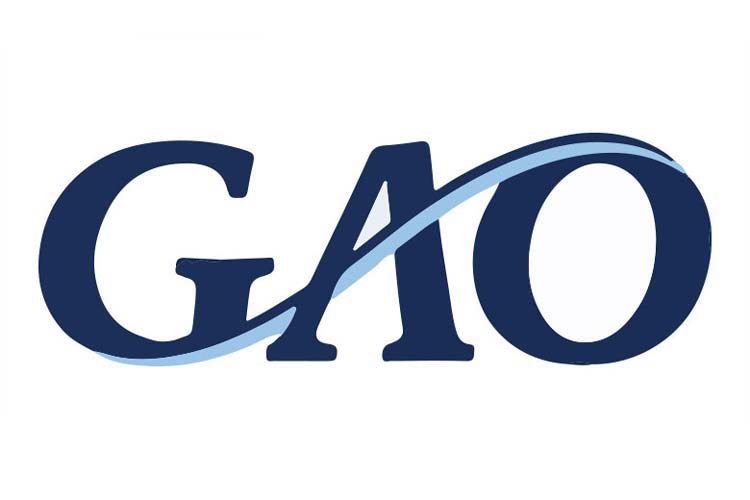
For the report, the GAO analyzed EEOC charge data for FY 2011 through FY 2021 and reviewed EEOC documentation. The GAO also conducted nine discussion groups with officials in EEOC field offices selected based on geography and workload. The GAO also interviewed EEOC headquarters and field officials.
Pending Charge Inventory Reductions
The government refers to the number of open EEOC charges as of the end of the FY as the “pending charge inventory.” From fiscal years 2011 to 2021, the EEOC’s pending charge inventory decreased from 82,199 to 43,520 charges. EEOC officials identified steps that contributed to the reduction, the report noted. For example, in FY 2018, the agency implemented an online portal, which allows individuals to file an inquiry and helps them determine if they meet the criteria to proceed with filing a charge. EEOC senior field office managers also shared best practices for reducing inventory.
Intake Process Length Varied Among EEOC Field Offices
For the purposes of the report, the GAO defined the intake process as beginning when an individual files an inquiry and ending when an EEOC official interviews the individual about the allegations. The GAO’s analysis of EEOC data from the online portal shows that the average length of the intake process varied among EEOC’s 53 field offices.
While the EEOC monitors the quality of its investigations, it does not monitor the length of the intake process across field offices, the GAO found. EEOC officials said they could monitor data on the length of the intake process, but do not routinely do so because they have focused on ensuring that individuals who file inquiries do not miss the statutory deadline for filing a charge.
EEOC Concurred with Sole Recommendation
The EEOC concurred with the GAO’s sole recommendation that the EEOC Chair should monitor field office-level data on the length of the intake process. For instance, the agency could monitor these data by including them in the monthly internal management reports it produces.
Tuesday, November 1, 2022: US BLS JOLTS Report For September Showed Increase in Job Openings to 10.7 Million; Hires & Total Separations Down Slightly
August’s 1.1 Million Jobs Openings Drop Estimate Revised to 860k
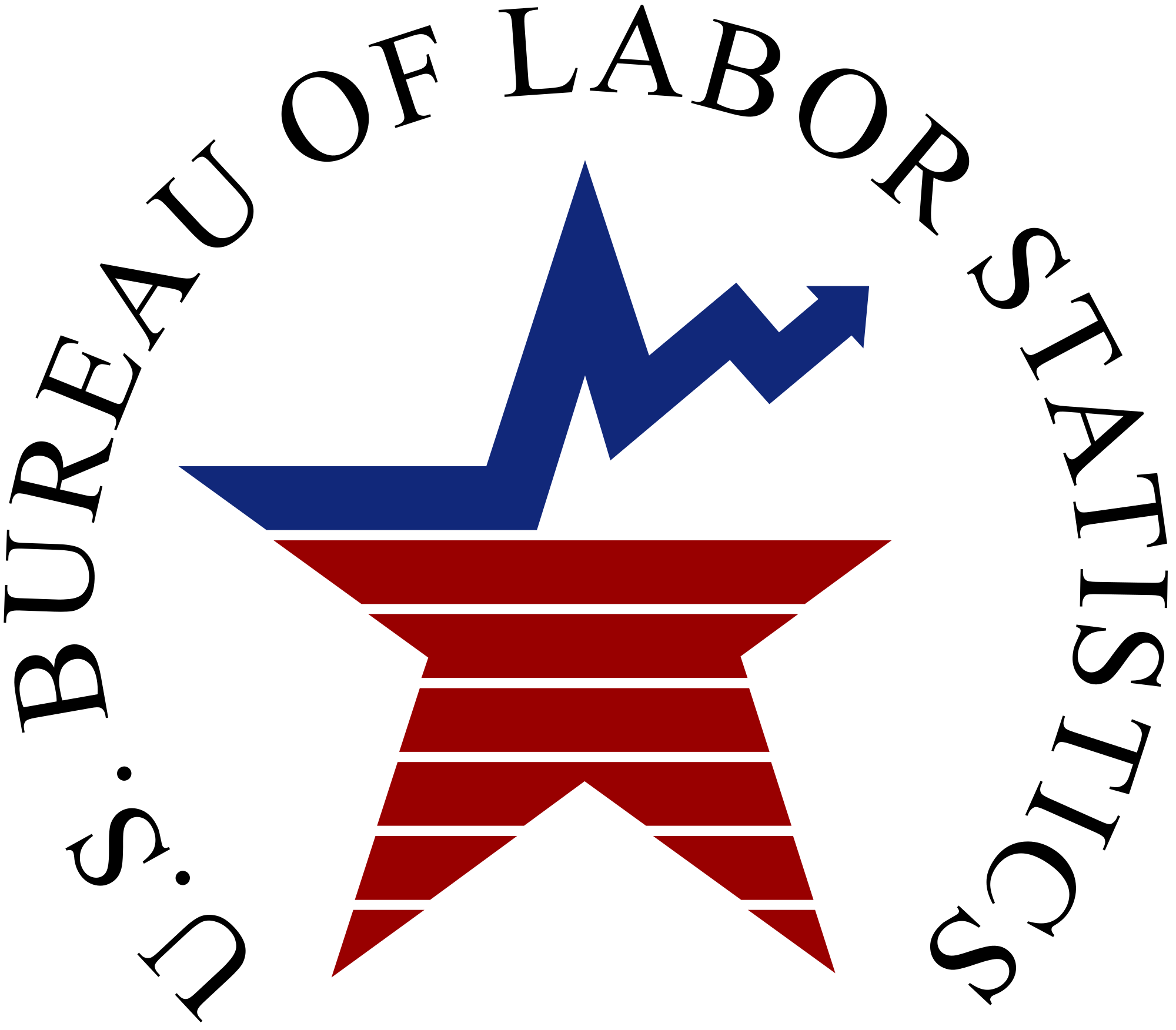
The largest increases in job openings were in accommodation and food services (+215,000); health care and social assistance (+115,000); and transportation, warehousing, and utilities (+111,000). The number of job openings decreased in wholesale trade (-104,000) and in finance and insurance (-83,000).
Number of Hires and Separations Down Slightly
The number of hires was down to 6.1 million compared to 6.3 million in August. Total separations decreased to 5.7 million (-370,000) from August at 6.0 million. Within separations, the number of voluntary quits decreased slightly in September with 4.1 million from August at 4.2 million. The numbers for layoffs and discharges (1.3 million) edged down compared to August at 1.5 million.
August’s 1.1 Million Jobs Openings Drop Estimate Revised to 860k
U.S. Department of Labor (USDOL) Chief Economist Joelle Gamble noted in a Twitter thread that BLS revised its first August estimate of a 1.1 million drop in job openings to 860k. Nevertheless, Economist Gamble shared the following chart showing that August’s decline may still be the sharpest decline since the COVID-19 pandemic recession:
Today’s job openings & labor turnover (JOLTS) data for September show a 4.3% increase in total openings from August, the same month the economy added 263k jobs. August’s first estimate of +1 million drop in openings was revised to 860k. Hires fell ~4% & separations fell ~6%.(1/4) pic.twitter.com/EOaV5ZL3M2
— Joelle Gamble (@joelle_gamble) November 1, 2022
The ratio of unemployed workers to job openings fell in September (from 0.60 to 0.54), she reported. Economist Gamble also shared the following chart on “churn” (hires plus separations). Although total hires, layoffs, and quits all fell, the change in quits was not statistically significant, she noted.
BLS has additional interactive charts here.
Thursday, November 3, 2022: Analytical Basis Behind U.S. NLRB General Counsel’s Memo on Electronic Surveillance and Organizing Flawed, Says Top Labor Law Attorney
Memo is Geared to Insert NLRB into Non-Union Workforce, Attorney Observed
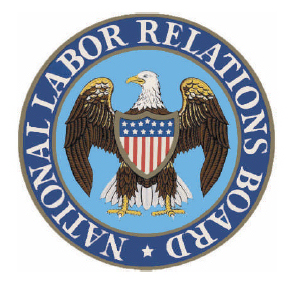
On Monday, October 31, GC Abruzzo sent a memo to the Board urging it to adopt a new policy that would find an employer presumptively violates the National Labor Relations Act (NLRA) when the employer’s surveillance and management practices, viewed as a whole, would tend to interfere with or prevent a reasonable employee from engaging in activity protected by the NLRA. Abruzzo fears that the increasing use of electronic surveillance and software to closely monitor and manage employees deters workers from having discussions that serve as a necessary start to collective activity, including union campaigns.
“It concerns me that employers could use these technologies to interfere with the exercise of Section 7 rights under the [NLRA] by significantly impairing or negating employees’ ability to engage in protected activity—and to keep that activity confidential from their employer,” GC Abruzzo stated in a press release.
However, “only lawyers are worried about that,” Mr. Suflas said. “The linchpin is that a reasonable employee would not see monitoring policies as infringing on their NLRA rights, primarily because most employees are not aware of the NLRA,” he explained. Therefore, “the analytical basis [of the memo] is flawed,” he observed.
How We Got Here
Section 7 of the NLRA guarantees employees “the right to self-organization, to form, join, or assist labor organizations, to bargain collectively through representatives of their own choosing, and to engage in other concerted activities for the purpose of collective bargaining or other mutual aid or protection,” as well as the right “to refrain from any or all such activities” (See 29 U.S.C. § 157). Section 8(a)(1) of the NLRA makes it an unfair labor practice (ULP) for an employer “to interfere with, restrain, or coerce employees in the exercise of the rights guaranteed in Section 7” of the Act. (See 29 U.S.C. § 158)
In her 9-page memo, GC Abruzzo described various technologies of concern to her that are increasingly being used to closely monitor and manage employees and may infringe an employee’s Section 7 rights. Examples of these practices include employers:
- recording workers’ conversations and tracking their movements using wearable devices, cameras, radio-frequency identification badges, and GPS tracking devices;
- monitoring employees’ computers with keyloggers and software that takes screenshots, webcam photos, or audio recordings throughout the day.
Moreover, some employers monitor employees outside of working time via employer-issued phones or wearable devices, or apps installed on workers’ own devices. GC Abruzzo also noted that pre-employment personality tests and scrutiny of applicants’ social media accounts concerned her.
Employer Transparency Of Monitoring Devices Concern Also Floated: Her proposed framework would provide that “[i]f the employer establishes that the [surveillance and management] practices at issue are narrowly tailored to address a legitimate business need—i.e., that its need cannot be met through means less damaging to employee rights—[the Board should] balance the respective interests of the employer and the employees to determine whether the Act permits the employer’s practices. If the employer’s business need outweighs employees’ Section 7 rights, unless the employer demonstrates that special circumstances require covert use of the technologies, [the Board should] require the employer to disclose to employees the technologies it uses to monitor and manage them, its reasons for doing so, and how it is using the information it obtains.”
“Only with that information can employees intelligently exercise their Section 7 rights and take appropriate measures to protect the confidentiality of their protected activity if they so choose,” asserted GC Abruzzo in the memo.
Memo is a Means to Further Insert the NLRB into the Non-Union Workforce
Since Mr. Suflas stated that GC Abruzzo’s memo does not realistically reflect the actual concerns of typical employees, WIR asked him why the GC might focus on this topic. The NLRB is looking for ways to stay relevant amid declining union participation, he explained, and this proposed policy could be a lever to further insert the NLRB into the non-union workforce.
“For the NLRB to have jurisdiction, it has to demonstrate that these rules interfere with employee rights to engage in concerted activity,” Mr. Suflas explained. Under this “analytically-flawed” proposed policy, “if a union is involved in organizing activities and employers have electronic monitoring practices, they [would] create a platform” for the NLRB to get involved, Mr. Suflas pointed out. “That’s the whole point” of the memo’s proposal, he said.
In the 1950s about 35 percent of the workforce was unionized. In January 2022, the Bureau of Labor Statistics reported that the total union membership rate for the public and private sectors combined was down to 10.3 percent in 2021. The union membership rate of public-sector workers – 33.9 percent in 2021 – continued to be more than five times higher than the rate of private-sector workers, which was 6.1 percent. The NLRB only has jurisdiction over the private sector, Mr. Suflas emphasized, which means it has jurisdiction over only 6.1 percent of the workforce.
“Therefore, the contemporary NLRB is an agency with nothing to do,” Mr. Suflas stated.
“The agency is ill-equipped for the modern, electronic non-union workplace,” he added.
As such, employers should conduct a “risk/reward analysis” – i.e., consider “what is the risk that something bad will happen if [they push back against] an NLRB rule [that] is not legally sound,” advised Mr. Suflas.
Friday, November 4, 2022: Political Flip Continued at U.S. NLRB with Publication of Proposed Union Election Protection Rule That Would Rescind Current Trump-Era Rule

Chairman Lauren M. McFerran was joined by Board Members Gwynne A. Wilcox and David M. Prouty in proposing the new rule. Board Members Marvin E. Kaplan and John F. Ring dissented, according to a Board press release.
Initial comments on this proposed Rule are due on or before January 3, 2023. Comments replying to comments submitted during the initial comment period are due on or before January 17, 2023. Comments may be submitted electronically at https://www.regulations.gov/commenton/NLRB-2022-0002-0001.
Proposal is Latest Example of Political Policy Flips, Top NLRA Lawyer Told DE
“When it comes to the National Labor Relations Act (NLRA), [the rules are] highly political” attorney Steven W. Suflas commented to the DirectEmployers (DE) WIR team in an interview on Thursday when the Board first announced the proposal. Mr. Suflas is Of Counsel in the Salt Lake City office of Holland & Hart LLP. “The law flips every time there is a change in the White House,” he observed.
“[This situation makes it] very hard for employers to know what their legal obligations are because it changes with each administration,” he noted.
NPRM Has Three-Parts
The proposed rule has three parts, each rescinding a corresponding portion of the Board’s current Rule issued in April 2020, and effective July 31, 2020.
Part 1: Blocking Charge Policy
First, the proposal would return to the Board’s long-established “blocking charge” policy as most recently reflected in a 2014 Final Rule, the NPRM stated. NLRB Regional Directors (RDs) would again have the discretion to hold a representation petition in abeyance (to “block” it) when a related ULP charge is pending.
The current Rule limits the circumstances in which RDs could block petitions in the face of pending ULP charges. Such elections must go forward and the votes will either be counted or impounded, depending on the nature of the charge. Prior to the 2020 Rule, unions routinely filed Unfair Labor Practice Charges related to the election (“blocking charges”) to pause elections they were likely to lose or to delay decertification bids by workers. The 2020 rule was a significant change, according to Suflas. It could take years for ULP charges to be resolved, he pointed out.
In June, we reported that a majority of the NLRB held that the Trump-era “block-charging” Rule does not prevent NLRB staff from issuing merit-based dismissals of election petitions – even without a full evidentiary hearing.
Part 2: Voluntary-Recognition Bar
Under Section 9(a) of the National Labor Relations Act (NLRA), an employer’s obligation to collectively bargain is triggered by: (a) a union victory in an NLRB-conducted secret-ballot election among employees; or (b) the employer’s voluntary recognition of the labor organization based on a review of union authorization cards signed by a majority of employees. The voluntary-recognition bar doctrine allows a union — after an employer has voluntarily and lawfully recognized it – to represent employees for a “reasonable” period of time without being subject to challenge. In other words, the voluntary-recognition bar blocks petitions to decertify unions empowered through voluntary recognition for a certain time period.
The current Rule provides that unions are only protected from challenge if they notify the NLRB of their recognition and the employer posts a notice alerting workers to their right to file for a decertification election within 45 days of posting. According to the NLRB, under this current Rule, employees rarely file election petitions to oust recognized unions, suggesting that voluntary recognition almost always accurately reflects employee free choice. Thus, the proposed Rule would eliminate the required notice-and-election procedure triggered by an employer’s voluntary recognition of a union based on a showing of majority support among employees. The proposed Rule would provide an immediate recognition bar that lasts a minimum of six months and a maximum of one year, from the date of the parties’ first bargaining session. This voluntary recognition bar would prevent challenges to the status of a newly recognized union until a reasonable period for collective bargaining has passed, the Board stated.
Part 3: Section 9(a) Recognition in the Construction Industry
Due to the nature of the work involved, construction industry employers can, under Section 8(f) of the NLRA, choose to recognize a union without any showing of majority support by employees. Thus, the NLRA allows the construction industry an exemption to Section 9(a). These 8(f) unions may attain full status through an election or voluntary recognition based on majority support.
Prior to the current rule, workers had a six-month window following recognition to challenge voluntarily-recognized construction unions. The current Rule allows the Board to evaluate a construction-industry union’s purported recognition at any time that an election petition is filed. It also requires that a union invoking the removal bar point to more than the language of the applicable collective-bargaining agreement to prove majority support.
The proposed Rule would return to the Board’s prior approach of a six-month limitations period for election petitions challenging a construction employer’s voluntary recognition of a union (as established in Casale Industries, 311 NLRB 951 (1993)). It would also include the principle (established in Staunton Fuel & Material, 335 NLRB 717 (2001)) that sufficiently detailed language in a collective-bargaining agreement can serve as sufficient evidence that voluntary recognition was based on Section 9(a) of the Act. The Board requests public comments on the majority’s belief that the 2020 rule injected uncertainty and unpredictability into construction-industry labor relations.
Friday, November 4, 2022: Economy Added 261k Jobs in October; Unemployment Rate Increased Slightly
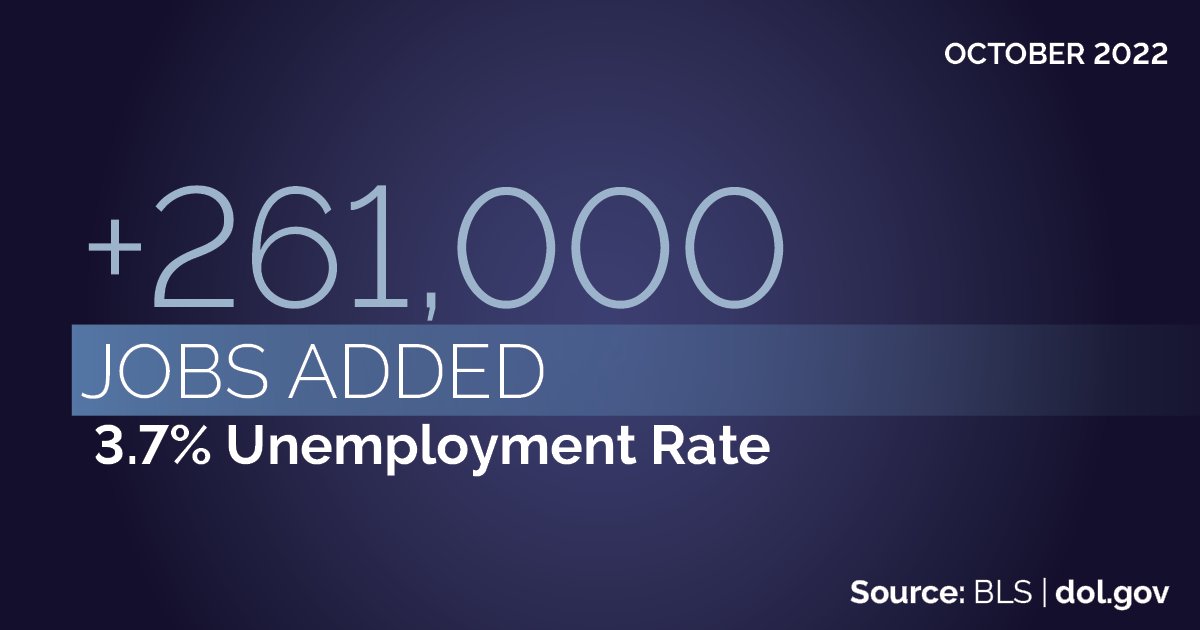
The short-term unemployment rate (those unemployed for up to 26 weeks) was 3.7 percent, up from September’s 3.5 percent. Among the unemployed, the number of permanent job losers remained at 1.2 million, the same as in September. The number of persons on temporary layoff increased over 10% to 847,000 compared to September’s 758,000.
The labor force participation rate, at 62.2 percent, decreased a smidge from 62.3 percent in September. The employment-population ratio was 60.0 percent – almost unchanged from September’s 60.1 percent. These measures are 1.2 percentage points below their values in February 2020, prior to the coronavirus (COVID-19) pandemic, BLS noted.
Long-term Unemployment Numbers Changed Little
The numbers for total unemployment are reported in a chart here. Unemployment (seasonally adjusted) for 5 to 14 weeks was at 29.9 percent, up slightly from 28.5 percent in September. The rate for unemployment of 15 to 26 weeks was 13.5 percent, a decrease from 15.6 percent in September. The unemployment rate for 27 weeks and over was 19.5 percent, up from 18.5 percent in September. The number of long-term unemployed (those jobless for 27 weeks or more) was 1.2 million in October, up a bit but little changed from 1.1 million in September.
Monthly Changes Illustrated in Charts
In her Twitter thread on the October Report, U.S. Department of Labor (DOL) Chief Economist Joelle Gamble shared the following chart on the monthly change in employment from January 2021 through October 2022:
JOBS REPORT: In October, the economy added 261K jobs (a 3-month moving average of 289K). The unemployment rate was 3.7 percent, remaining near historic lows. (1/5) pic.twitter.com/kUpmybdPxy
— Joelle Gamble (@joelle_gamble) November 4, 2022
Manufacturing and education & health services saw statistically significant gains, Economist Gamble reported:
Unemployment Rate Changes Varied Among the Major Worker Groups
Among the major worker groups, the unemployment rate for adult women was 3.4 percent, up from 3.1 percent in September. The unemployment rates for Whites rose to 3.2 percent, compared to 3.1 percent in September. The jobless rates for adult men (3.3 percent), teenagers (11.0 percent), and Blacks (5.9 percent) showed little change.
The unemployment rate for Asians ticked up to 2.9 percent from September’s 2.5 percent. For Hispanics, the rate was 4.2 percent in October, an increase from 3.8 percent in September. For Native Hawaiians and Other Pacific Islanders the rate was 3.1 percent in October, down from 3.7 percent in September. For people who are of Two or More Races, the rate was 5.5 percent, down from September’s 6.4 percent. The jobless rate for Veterans decreased slightly to 2.5 percent compared to 2.6 percent in September. For Individuals with Disabilities, the 7.4 percent rate was a tiny increase from 7.3 percent in September.
| The Employment Situation – October 2022 | ||||
| Unemployment Rate | August 2022 | September 2022 | October 2022 | Feb 2020 Pre-Pandemic |
| National (Seasonally adjusted) |
3.7% | 3.5% | 3.7% | 3.5% |
| White | 3.2% | 3.1% | 3.2% | 3.0% |
| Black | 6.4% | 5.8% | 5.9% | 6.0% |
| Asian | 2.8% | 2.5% | 2.9% | 2.5% |
| Hispanic (Seasonally adjusted) |
4.5% | 3.8% | 4.2% | 4.4% |
| Native Hawaiians & Other Pacific Islanders | 3.8% | 3.7% | 3.1% | 2.7% |
| Two or More Races (Not seasonally adjusted) |
6.2% | 6.4% | 5.5% | 6.1% |
| Men (20+) | 3.5% | 3.35% | 3.3% | 3.2% |
| Women (20+) (Seasonally adjusted) |
3.3% | 3.1% | 3.4% | 3.1% |
| Veteran (Not seasonally adjusted) |
2.4% | 2.6% | 2.5% | 3.7% |
| Individuals with Disabilities (Not seasonally adjusted) |
7.7% | 7.3% | 7.4% | 7.8% |
Economist Gamble shared the following chart on unemployment rates by race/gender for groups with large sample sizes:
BLS has additional, interactive graphs available here.
See Also
- President Biden’s remarks
- U.S. Secretary of Labor Marty Walsh’s remarks
- Chief Economist Joelle Gamble’s full Twitter thread of observations
- BLS Commissioner William W. Beach’s statement
- White House Counsel of Economic Advisers’ blog
In Brief
Friday, November 4, 2022: EEOC Requested Public Input on Draft FY 2022-2026 Strategic Plan

The EEOC also publishes a Strategic Enforcement Plan (SEP), which is a separate document that establishes the agency’s substantive area enforcement priorities. Last month, we reported that the Commission voted unanimously to publish its draft SEP in the Federal Register and for public feedback. The agency will seek public comment on the draft SEP for FYs 2023-2027 at a later date, it said.
Friday, November 4, 2022: USDOL Wage and Hour Division Announced New 30-Day Comment Period on Unchanged Paid Sick Leave Federal Contractor Recordkeeping Requirements
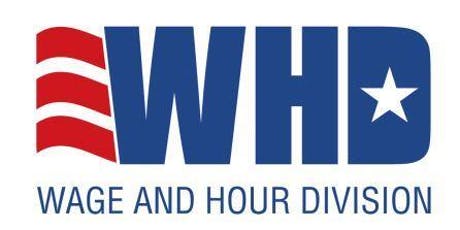
We previously reported that, on July 19, 2022, the WHD published a notice in the Federal Register with a 60-day public comment period on its proposed extension of the ICR. That first comment period closed on September 19, 2022. Comments for the current 30-day notice are due on December 5, 2022. Stakeholders can submit comments via https://www.regulations.gov.
Looking Ahead:
Upcoming Date Reminders
Thursday, November 10, 2022: (2:00 – 3:00 PM Eastern Time): DE Webinar – “How to Attract, Evaluate, Onboard and Retain Veteran Talent”
Thursday, November 17, 2022: (1:00 PM Eastern Time): OFCCP Webinar – “FAAP Directive 2013-01, Revision 3”
Friday, November 25, 2022: US DOL Final Rule rescinding Industry-Recognized Apprenticeship Programs and shifting department resources to Registered Apprenticeship Programs takes effect – http://www.federalregister.gov/d/2022-20560
Wednesday, November 30, 2022: (2:00 – 3:00 PM Eastern Time): DE Webinar – “Who Has the Right to Talk? Discussing the Laws Promoting Employee Rights to Pay Transparency”
Monday, December 5, 2022: Comments due on USDOL WHD’s request to extend unchanged paid sick leave recordkeeping requirements for federal contractors – https://www.regulations.gov
Monday, December 5, 2022: Comments due on EEOC Draft FY 2022-2026 Strategic Plan – https://www.regulations.gov/document/EEOC-2022-0004-0001
Wednesday, December 7, 2022: Deadline to submit initial comments on NLRB’s proposed Rule to Determine Joint Employer Status (previous November 7 deadline extended) – https://www.regulations.gov/docket/NLRB-2022-0001
Tuesday, December 13, 2022: Comments due on USDOL WHD proposed rule on “Employee or Independent Contractor Classification Under the Fair Labor Standards Act” (previous November 28 deadline extended) – https://www.regulations.gov/docket/WHD-2022-0003
Wednesday, December 21, 2022: Deadline to submit reply comments in response to initial comments on NLRB’s NPRM to Determine Joint Employer Status (previous November 21 deadline extended) – https://www.regulations.gov/docket/NLRB-2022-0001
Sunday, January 1, 2023: The minimum wage for federal contracts covered by Executive Order 13658 (“Establishing a Minimum Wage for Contractors”) (contracts entered into, renewed, or extended prior to January 30, 2022), will increase to $12.15 per hour, and the minimum cash wage for tipped employees increases to $8.50 per hour – https://www.federalregister.gov/documents/2022/09/30/2022-20905/minimum-wage-for-federal-contracts-covered-by-executive-order-13658-notice-of-rate-change-in-effect
Sunday, January 1, 2023: The minimum wage for federal contractors covered by Executive Order 14026 (“Increasing the Minimum Wage for Federal Contractors”) (contracts entered into on or after January 30, 2022, or that are renewed or extended on or after January 30, 2022), will increase to $16.20 per hour, and the minimum cash wage for tipped employees increases to $13.75 per hour – https://www.federalregister.gov/documents/2022/09/30/2022-20906/minimum-wage-for-federal-contracts-covered-by-executive-order-14026-notice-of-rate-change-in-effect
Tuesday, January 3, 2023: Deadline to submit initial comments on NLRB’s proposed changes to NLRA regulations – https://www.regulations.gov/commenton/NLRB-2022-0002-0001
Tuesday, January 17, 2023: Deadline to submit reply comments in response to initial comments on NLRB’s proposed changes to NLRA regulations – https://www.regulations.gov/commenton/NLRB-2022-0002-0001
Wednesday, April 12 – Friday, April 14, 2023: DEAMcon23 Chicago (Registrations open now; Agenda coming soon!
IMPORTANT: Tuesday, November 8, 2022 is Election Day. Make sure to get out and vote!
THIS COLUMN IS MEANT TO ASSIST IN A GENERAL UNDERSTANDING OF THE CURRENT LAW AND PRACTICE RELATING TO OFCCP. IT IS NOT TO BE REGARDED AS LEGAL ADVICE. COMPANIES OR INDIVIDUALS WITH PARTICULAR QUESTIONS SHOULD SEEK ADVICE OF COUNSEL.
SUBSCRIBE.
Compliance Alerts
Compliance Tips
Week In Review (WIR)
Subscribe to receive alerts, news and updates on all things related to OFCCP compliance as it applies to federal contractors.
OFCCP Compliance Text Alerts
Get OFCCP compliance alerts on your cell phone. Text the word compliance to 55678 and confirm your subscription. Provider message and data rates may apply.


